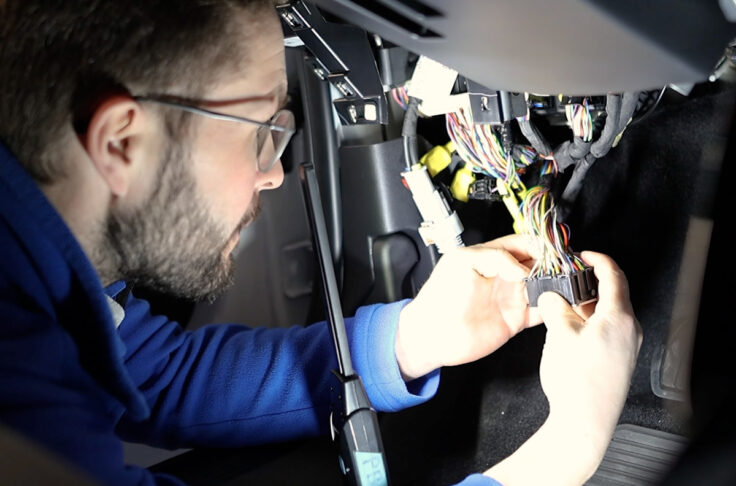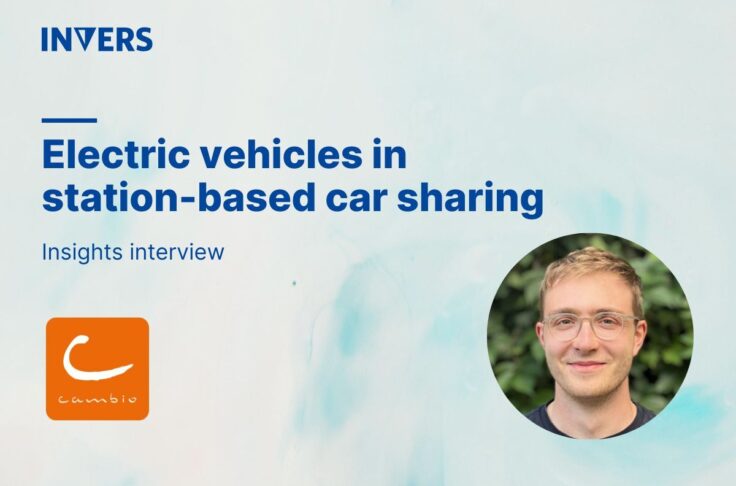Beyond Basic Math: 6 Metrics to Help Prove Telematics ROI

You know your telematics system is working and helping. Vehicles break down less often, drivers seem happier, response times are faster, operations feel more efficient, and your life is easier. But when stakeholders ask for hard numbers or you’re planning next year’s tech budget, “it feels like it’s working” doesn’t cut it.
Here’s the reality: telematics ROI is entirely measurable, but you need to know what to track and how to calculate it. This article gives you a framework to calculate your system’s value for when you need to defend and prove it.
What telematics ROI means (beyond the basic math)
The traditional ROI formula tells only half the story. In fleet telematics, true ROI captures both the money you save and the money you make from improved operations.
Direct savings are easy to spot: lower fuel costs, reduced maintenance, fewer insurance claims, faster vehicle recovery.
Indirect gains are where the real return lives: higher utilization rates, fewer support interactions, better customer retention, reduced admin overhead, and the ability to scale without adding headcount.
The six metrics that matter most
1. Track support interactions: a silent signal of operational efficiency

What to measure: Support interactions per trip (calls, emails, or tickets from users)
Why it matters: While utilization rate shows how often vehicles are used, support interactions reveal the quality of that experience. Fewer support requests typically indicate smoother booking processes, better vehicle access, and fewer app performance issues.
As Klaus Rathe, INVERS’ Team Lead Projects & Support, explains: “Tracking support interactions per trip is another great way to measure user experience, because customers typically don’t call unless something’s wrong.”
Bonus metric: Track this alongside utilization rate for a complete picture: Utilization rate = (Total hours in use ÷ Total available hours) × 100
2. Measure recovery time: when things go wrong
What to measure: Time to resolve incidents, such as theft, breakdowns, and misuses
Real impact calculation:
- Before: 8 hours average recovery time
- After: 2 hours average recovery time
- Savings: 6 hours × $40/hour operational cost = $240 per incident
- Annual impact: $240 × 20 incidents = $4,800 in direct savings
- Plus prevented revenue loss from vehicles being out of commission
Learn how Wift used telematics to achieve a 95% stolen vehicle recovery rate.
3. Calculate labor hours saved: the hidden goldmine
What to measure: Time spent on manual tasks before and after telematics implementation.
Focus areas: Key handovers, trip reviews, customer support calls, mileage collection, vehicle inspections
Real-world example: Before implementing telematics, Jewish Family Service staff spent entire days physically checking mileage across 60 vehicles at four locations.
The transformation:
- Before: a full day (8+ hours)
- After: 30 minutes
- Time saved: 7+ hours per check
- Additional savings: $10,000 in the first year on parking, tolls, and mileage reimbursements
“Instead of half a day, we only need half an hour to check the mileage of the 60 vehicles,” says Christina Swank, Associate Director of Administrative Services.
4. Improve damage recovery: turn accountability into profit
What to measure: Percentage of damage costs recovered from responsible parties
Real impact calculation:
- Before: 20% recovery rate on $50,000 annual damage
- After: 70% recovery rate
- Additional recovery: 50% × $50,000 = $25,000 annually
Operators using damage detection tools or trip-based data tracking often recover more costs and face fewer disputed claims. Learn how MyWheels increased incident traceability rate from 30% to 93% after implementing AI-powered damage detection.
5. Turn telematics data into insurance savings

What to measure: Insurance premium changes and claims frequency after telematics implementation
Real impact: JFS secured lower insurance rates after equipping their fleet with GPS tracking and remote immobilization capabilities. These features provided insurers with confidence in their risk management practices.
Nicholas Cole, Principal Consultant at AutoMobility Advisors, explained in our How to Run Effective Pilots webinar: “Initially, insurance companies didn’t understand car sharing or the benefits of telematics. But within a year, our insurer saw the value of our data and worked with us to lower rates.”
Beyond premiums: Telematics data supports claims processing and fraud detection. “The ability to contextualize data—like why a hard braking event occurred—can help insurance companies differentiate between reckless driving and defensive driving,” Nicholas adds.
Other operators have seen similar benefits. MILES, for example, uses telematics to detect aggressive driving patterns and reconstruct events. This allows for a more accurate understanding of incidents without relying solely on driver reports or witness accounts.
6. Reduce maintenance costs through prevention
What to measure: Maintenance costs per vehicle per year, comparing scheduled vs. unscheduled repairs
Track the shift: Monitor your transition from reactive to predictive maintenance
Key indicators:
- Reduced emergency repairs
- Extended vehicle lifespan
- Lower per-mile maintenance costs
- Fewer roadside assistance calls
Learn how Flexicar used telematics to help them identify potential issues before they become problems.
The pitfalls that kill ROI calculations
1. No baseline, no benchmark
Don’t skip establishing your “before” picture. Start tracking fuel spend, admin time, and damage recovery rates before implementation. Without baseline data, proving ROI becomes nearly impossible.
2. Sticker shock syndrome
Upfront costs can feel high, but the long-term returns often far outweigh the initial investment.
3. Ignoring the invisible wins
Not every benefit appears on balance sheets. Improved customer satisfaction, increased driver retention, and operational flexibility create measurable value over time.
4. Expecting instant results
Expecting immediate results is a common mistake. ROI builds as teams adapt and systems integrate into daily workflows. Most operators see the biggest gains after 3–6 months of implementation.
Expert insights: what fleet managers should know

We asked operators what they notice first when measuring their telematics ROI. Their answer? Labor savings and vehicle protection.
On labor efficiency: “Prior to the keyless entry system, we would physically check all the vehicles for the mileage intervals… They’re out for the day, just recording mileage. Now, it takes us 30 minutes to check the mileages of all 60 vehicles.” —Christina Swank, Jewish Family Service of Atlantic County (JFS)
On asset protection: “A vehicle was stolen in Santiago, but with telematics tracking, we located and recovered it within hours—even though it was 100 kilometers away. Knowing we can safeguard our assets while reinforcing customer trust is incredibly rewarding.” —Carlos Oliveira, Wift.
On damage accountability: “Without advanced technology, carshare operators can identify responsible parties only 23% of the time. This lack of traceability leads to significant financial losses.” —Dr. Tom Athoff, carvaloo.
Your ROI action plan
Your telematics system is already generating value, and focusing on these six metrics will help you capture and communicate that value effectively.
Quick Start Checklist:
✔️ Establish baseline measurements for all six metrics
✔️ Set up tracking systems for ongoing monitoring
✔️ Calculate your break-even point using real costs
✔️ Schedule regular ROI reviews
✔️ Document case studies as improvements emerge
Focus on these core metrics, be patient with the timeline, and let your system prove its worth through measurable results.
Ready to maximize your telematics ROI? The data is already there; now you know how to use it.
Talk to our team and see how INVERS can help you uncover, measure, and maximize your ROI.


